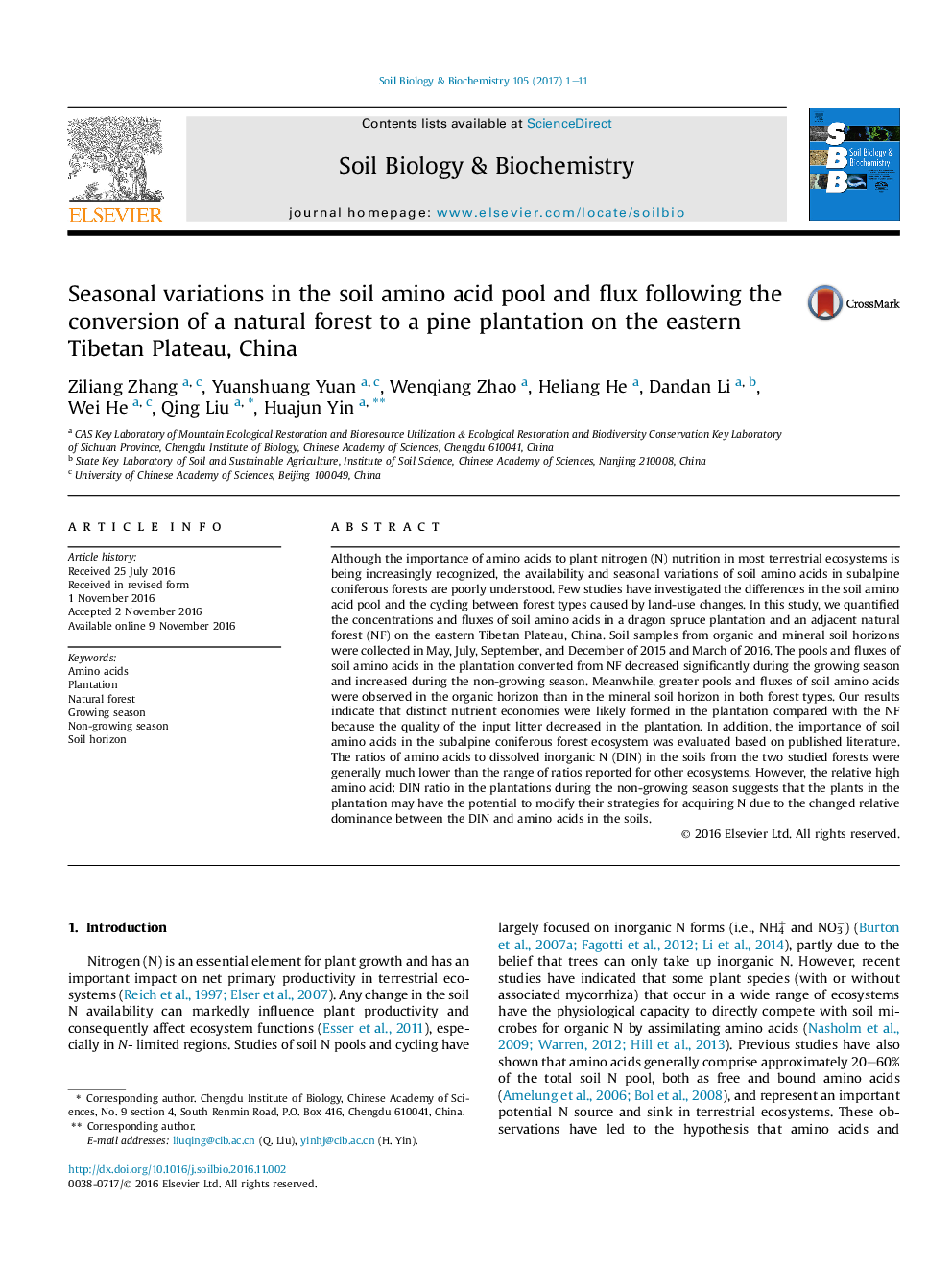| کد مقاله | کد نشریه | سال انتشار | مقاله انگلیسی | نسخه تمام متن |
|---|---|---|---|---|
| 5516497 | 1542579 | 2017 | 11 صفحه PDF | دانلود رایگان |
- Differences in quality of litter inputs impact soil amino acid pool and flux.
- Seasonal variation affects the balance of amino acid production and consumption.
- Plantation may form a distinct nutrient economy compared with natural forest.
- Soil amino acids may be the dominant N source for plantation in non-growing season.
Although the importance of amino acids to plant nitrogen (N) nutrition in most terrestrial ecosystems is being increasingly recognized, the availability and seasonal variations of soil amino acids in subalpine coniferous forests are poorly understood. Few studies have investigated the differences in the soil amino acid pool and the cycling between forest types caused by land-use changes. In this study, we quantified the concentrations and fluxes of soil amino acids in a dragon spruce plantation and an adjacent natural forest (NF) on the eastern Tibetan Plateau, China. Soil samples from organic and mineral soil horizons were collected in May, July, September, and December of 2015 and March of 2016. The pools and fluxes of soil amino acids in the plantation converted from NF decreased significantly during the growing season and increased during the non-growing season. Meanwhile, greater pools and fluxes of soil amino acids were observed in the organic horizon than in the mineral soil horizon in both forest types. Our results indicate that distinct nutrient economies were likely formed in the plantation compared with the NF because the quality of the input litter decreased in the plantation. In addition, the importance of soil amino acids in the subalpine coniferous forest ecosystem was evaluated based on published literature. The ratios of amino acids to dissolved inorganic N (DIN) in the soils from the two studied forests were generally much lower than the range of ratios reported for other ecosystems. However, the relative high amino acid: DIN ratio in the plantations during the non-growing season suggests that the plants in the plantation may have the potential to modify their strategies for acquiring N due to the changed relative dominance between the DIN and amino acids in the soils.
Journal: Soil Biology and Biochemistry - Volume 105, February 2017, Pages 1-11
